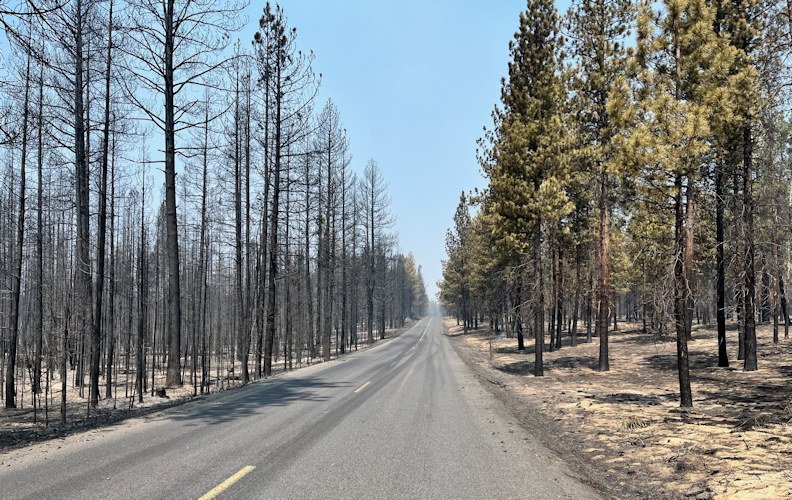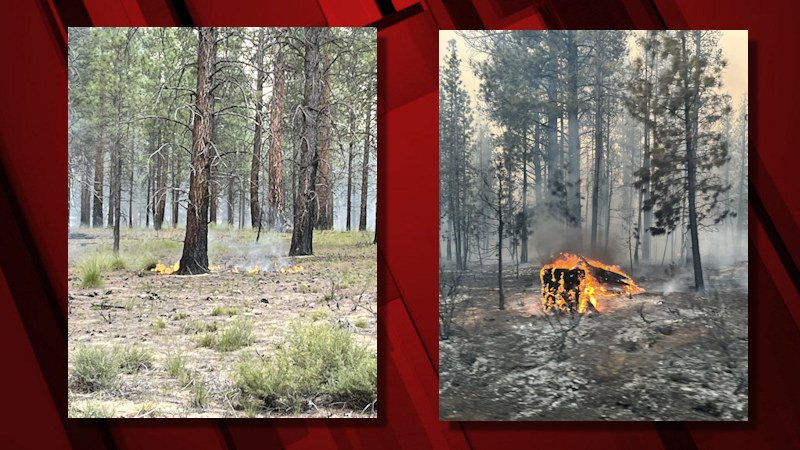Decades of fuel treatments on BLM land helped stop Darlene 3 Fire that threatened La Pine ‘in its tracks,’ agency says


Fuels-reduction work, along with quick firefighter response, 'prevented fire from reaching town'
PRINEVILLE, Ore. (KTVZ) — A week ago, the Darlene 3 wildfire broke out on public lands near the community of La Pine. "Fortunately, decades of land treatments performed by the Bureau of Land Management helped stop the fire in its tracks," the agency said Tuesday.
The Darlene 3 Fire began the afternoon of Tuesday, June 25, in Deschutes County. By Thursday, it had grown to over 3,000 acres, the BLM said in a news release.
The west flank of the fire headed toward the city of La Pine, home to over 2,000 people and located 30 miles southwest of Bend.
"Decades of extensive fuel treatments in the area performed by the BLM Prineville District Division of Fire and Aviation Management and partners, as well as a rapid response from local fire teams, prevented the fire from reaching the town," the agency said.
“This outcome was the result of a series of fuel treatments, not just one,” said James Osborne, BLM Prineville District Fire Management Officer. “Extensive fuel treatments around the city of La Pine done over numerous years have been highly effective in stopping previous fires, as well as this one. We continue to see that benefit.”
“The Bureau of Land Management has been doing work in this area since the '80s, since before they were called 'fuels treatments,'” said Rob Fore, BLM Prineville District Fuels Program Manager. “But in recent years, we have been more strategic. We are intentional with the kind of fuels treatments we choose and where we line them up on the landscape.”
These intentional treatments include hand thinning, mowing, masticating, and prescribed burning. BLM teams completed hand-thinning work, or the wintertime piling of materials to later burn, as recently as 2021.
Wildfire prevention is not the only goal of fuels treatments.
“Treatments don’t just reduce hazard fuels to help firefighters protect communities,” said Alison Dean, BLM Prineville District fire ecologist. “They also help restore the historical fire regime and the ecological health of the forest. They allow forests to regain resiliency to insect infestations and climate change, as well as future fires.”
The work doesn’t stop after one success. Along with continued community engagement with fire suppression partners across central Oregon, the BLM said its fire and aviation teams will continue tending to the land.
“The longevity of these treatments is ten to fifteen years max,” said Dean. “They need maintenance. The brush will be back.”
“We have done and will continue to do maintenance around La Pine,” said Osborne. “We plan to continue maintenance treatments as well as begin new treatments on our own and with our partners.”
To help prevent wildfires, learn more about the Bureau of Land Management Oregon/Washington’s fire restrictions.